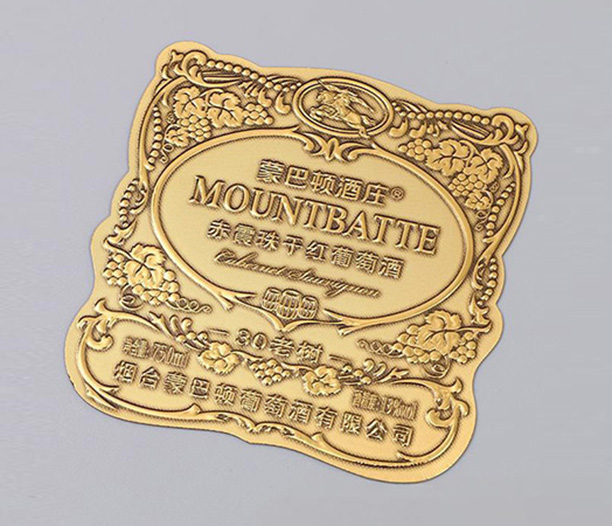In today's fast-paced industrial and commercial environments, efficiently tracking assets—from machinery and equipment to inventory and tools—is crucial for productivity and cost control. One of the most reliable solutions for this challenge is the use of permanent barcode labels. These labels are not just ordinary stickers; they are engineered to withstand harsh conditions, provide long-lasting identification, and integrate seamlessly into various tracking systems. Whether you're in manufacturing, healthcare, or logistics, understanding the value of permanent barcode labels can transform how you manage assets. This article delves into the key aspects of these labels, including their features, applications, customization options, and why they are indispensable for modern operations.

What Are Permanent Barcode Labels?
Permanent barcode labels are specialized identification tags designed to remain intact and readable over extended periods, even in demanding environments. Unlike standard labels that might fade, peel, or deteriorate, these are constructed from durable materials like polyester, polyimide, or metal, combined with robust adhesives and protective coatings. They encode data in barcode formats (such as QR codes or linear barcodes) that can be scanned quickly for asset tracking, inventory management, and maintenance logging. The core idea behind permanent barcode labels permanent barcode labels is to provide a reliable, low-maintenance solution for identifying items that need to endure wear, tear, and exposure to elements like moisture, chemicals, or extreme temperatures.
Key Features of Durable Barcode Labels
Permanent barcode labels stand out due to their resilience and functionality. Here are some defining characteristics:
High Durability: Made from materials like vinyl or laminated polyester, these labels resist abrasion, UV rays, and chemical exposure. This ensures that the barcode remains scannable for years, reducing the need for frequent replacements.
Strong Adhesion: They come with industrial-grade adhesives that bond securely to surfaces like metal, plastic, or glass, preventing peeling or lifting even in high-vibration settings.
Weather and Temperature Resistance: Whether it's outdoor use or freezer storage, permanent barcode labels maintain integrity across a wide temperature range, from -40°C to 150°C or higher.
Customizable Printing: Options include thermal transfer or laser etching for clear, high-contrast barcodes that enhance scanning accuracy. Many also incorporate sequential numbering or company logos for personalized asset management.
Compliance with Standards: Often designed to meet industry regulations, such as UL or CE certifications, ensuring they fit into standardized tracking systems.
These features make permanent barcode labels a smart investment for businesses aiming to minimize downtime and errors in asset tracking.
Industries That Rely on Permanent Barcode Labels
The versatility of permanent barcode labels means they are adopted across various sectors. Here's a look at some key industries:
Manufacturing and Industrial Settings: In factories, these labels are used on machinery, tools, and production lines to monitor usage, schedule maintenance, and prevent loss. They help in implementing lean manufacturing principles by providing real-time data on asset status.
Healthcare and Laboratories: Hospitals use permanent barcode labels on medical devices, specimen containers, and equipment to ensure accurate patient records, comply with safety standards, and manage inventory efficiently. Their ability to withstand sterilization processes is a major advantage.
Logistics and Warehousing: For shipping containers, pallets, and storage bins, these labels endure rough handling and environmental changes, enabling seamless tracking from origin to destination. This reduces shipping errors and improves supply chain visibility.
Retail and Inventory Management: Stores employ permanent barcode labels on shelving, high-value items, and fixtures to streamline stock counts and prevent theft. Their longevity means fewer label changes during seasonal updates or renovations.
Aerospace and Automotive: In these high-stakes industries, labels must survive extreme conditions like engine heat or outdoor exposure. Permanent barcode labels ensure critical parts are traceable throughout their lifecycle, supporting safety and compliance.
By integrating permanent barcode labels, these sectors enhance operational efficiency, reduce costs, and improve data accuracy.

Customization Options for Your Needs
One of the biggest advantages of permanent barcode labels is their adaptability. Businesses can tailor them to specific requirements:
Material Selection: Choose from options like aluminum for high-heat areas, polyester for general use, or tamper-evident films for security-sensitive applications.
Size and Shape: Labels can be cut to custom dimensions or shapes to fit unique assets, such as curved surfaces or small components.
Printing and Encoding: Incorporate variable data, such as serial numbers, QR codes, or text, using printing methods that ensure longevity. This allows for seamless integration with existing barcode scanners and software.
Color and Branding: Add company colors, logos, or warning symbols to improve visibility and brand consistency. This is especially useful for asset management in multi-site operations.
Adhesive Types: Select from permanent, removable, or repositionable adhesives based on the application. For instance, heavy-duty adhesives are ideal for outdoor assets, while lighter ones suit temporary tracking.
Customizing permanent barcode labels ensures they align with your operational workflow, maximizing their effectiveness and return on investment.
How to Implement Permanent Barcode Labels in Your Operations
Implementing permanent barcode labels involves a few strategic steps to ensure success:
Assess Your Environment: Evaluate factors like temperature, humidity, and exposure to chemicals or physical abrasion. This helps in selecting the right materials and adhesives for your permanent barcode labels.
Define Your Tracking Goals: Determine what data you need to capture—such as asset ID, location, or maintenance history—and choose a barcode format that supports it.
Partner with a Reliable Supplier: Work with providers who offer quality assurance and support for custom designs. Test samples in real-world conditions to verify durability.
Integrate with Software: Connect the labels to asset management software or ERP systems for automated data collection and reporting. This turns scanned data into actionable insights.
Train Your Team: Educate staff on proper application and scanning techniques to avoid errors. Regular audits can help maintain the system's integrity.
By following these steps, you can leverage permanent barcode labels to boost efficiency, reduce manual errors, and extend the life of your assets.
Common Mistakes to Avoid
While permanent barcode labels are highly effective, missteps can undermine their benefits. Avoid these pitfalls:
Ignoring Environmental Factors: Using standard labels in harsh conditions leads to premature failure. Always opt for labels rated for your specific environment.
Poor Placement: Applying labels to dirty, uneven, or high-movement surfaces can cause adhesion issues. Clean and prepare surfaces beforehand for optimal results.
Overlooking Scanner Compatibility: Ensure your barcode format matches your scanning equipment to prevent read errors. Test compatibility during the planning phase.
Neglecting Maintenance: Even durable labels need occasional checks for damage or wear. Incorporate label inspections into routine asset audits.
Skipping Customization: Generic labels might not meet unique needs, leading to inefficiencies. Invest in tailored solutions for better performance.
By steering clear of these errors, you can maximize the longevity and utility of your permanent barcode labels.
The Future of Asset Tracking with Permanent Barcode Labels
As technology evolves, permanent barcode labels are becoming smarter and more integrated. Trends like IoT connectivity and RFID hybrids are enhancing their capabilities, allowing for real-time tracking and data analytics. However, the core appeal remains their reliability and cost-effectiveness. By adopting permanent barcode labels now, businesses can future-proof their asset management systems and stay competitive.
In summary, permanent barcode labels are a cornerstone of efficient asset tracking, offering durability, customization, and broad applicability. Whether you're looking to reduce costs, improve accuracy, or comply with industry standards, these labels provide a practical solution. Start by evaluating your needs and exploring customization options to harness their full potential.
Frequently Asked Questions (FAQ)
Q1: What makes a barcode label "permanent" compared to standard labels?
A1: Permanent barcode labels are designed with high-quality materials like polyester, vinyl, or metal, and feature strong adhesives that resist peeling, fading, and environmental damage. They are tested to endure conditions such as extreme temperatures, moisture, and chemical exposure, ensuring they remain functional and legible for years without replacement.
Q2: Can permanent barcode labels be used outdoors or in wet environments?
A2: Yes, many permanent barcode labels are specifically engineered for outdoor or wet settings. They often include waterproof coatings, UV resistance, and adhesives that bond securely even in humid or rainy conditions. It's important to select labels rated for such environments to maintain performance.
Q3: How do I customize permanent barcode labels for my business?
A3: Customization options include choosing the material, size, shape, color, and printing method (e.g., thermal transfer for durability). You can also add sequential numbers, logos, or specific barcode formats. Work with a supplier to discuss your needs, such as asset type and operating conditions, to create labels that fit your workflow.
Q4: Are permanent barcode labels cost-effective for small businesses?
A4: Absolutely. While the initial cost might be higher than standard labels, permanent barcode labels reduce long-term expenses by minimizing replacements, preventing asset loss, and improving efficiency through accurate tracking. They can scale with your business, starting with a pilot project to demonstrate value.
Q5: What industries benefit the most from using permanent barcode labels?
A5: Industries like manufacturing, healthcare, logistics, retail, and aerospace see significant benefits due to their need for reliable asset identification in challenging environments. These labels help streamline operations, ensure compliance, and enhance data accuracy across various applications.
By addressing these common queries, we hope to clarify the value and versatility of permanent barcode labels. If you have more questions, consider consulting with a specialist to tailor a solution for your specific needs.






